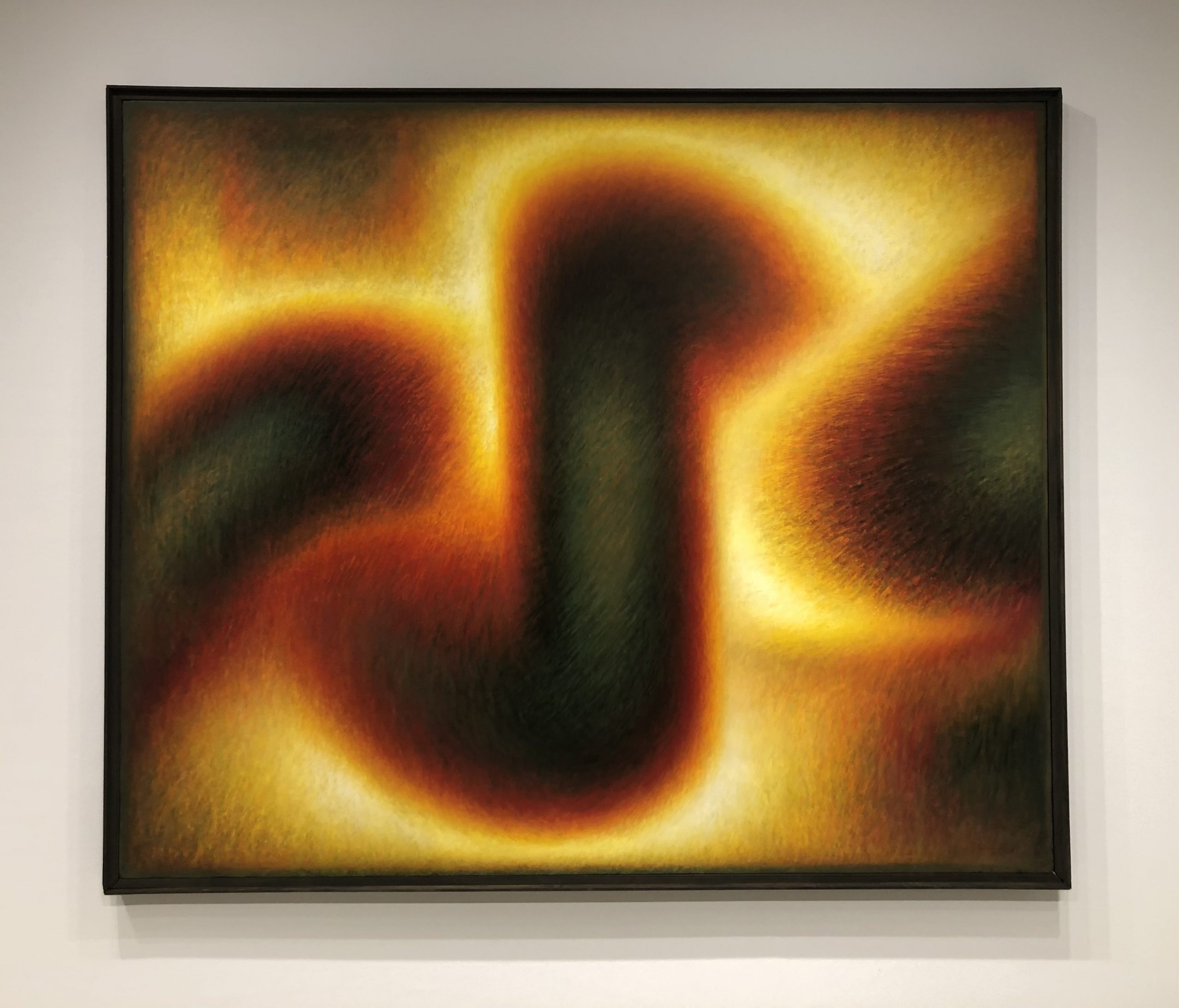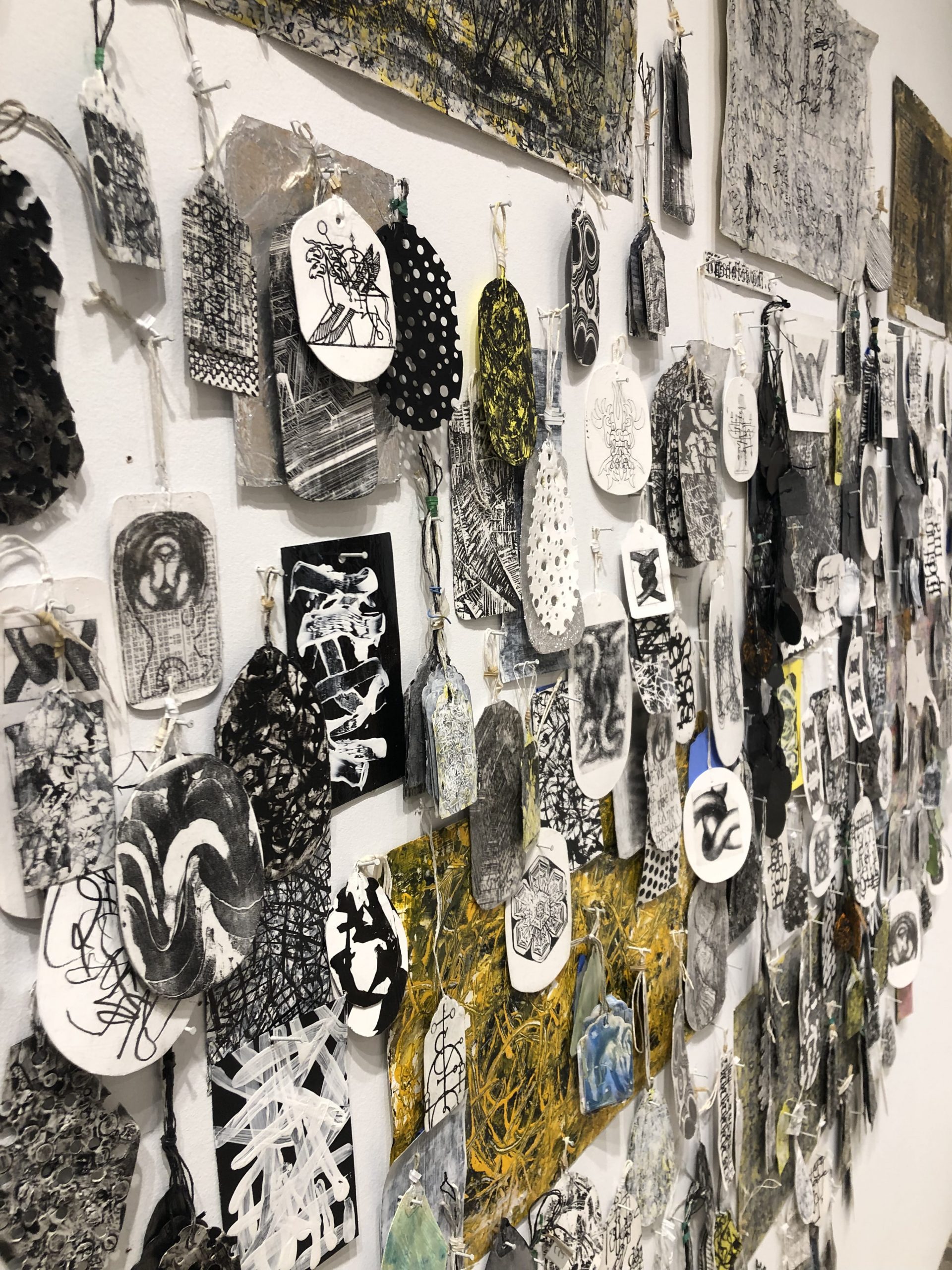Sabbatical Reflection
Frank Piatek requested that instead of a personal reflection on sabbaticals, he would like to share a summary of his practice and the various courses he has created during his time at SAIC
About My Practice:
In the context of this request for Information about what I do, and in the context of my relationship to the School of the Art Institute of Chicago, I will offer a name : ARTIST TEACHER. Artist Teacher is the norm in the Drawing and Painting Department where I teach, we are practitioners of the subjects we teach. Yet having said that, we or I am not limited in my creative process to what I teach. My imagination is free, my own interest leads me in works that in the studio are my own and secret until it is time to show the work. This is where the Practice of artist and teacher separate. The formula of Artist Teacher can also be reversed. My interests as an Artist can motivate the arena I teach within. For example, out of the several types of classes I teach, two in particular, The Materials and Techniques of Painting, and The Spiritual in Art come to mind. Both classes are of Lecture /Studio formats. Research and Building lectures for these classes rises directly out of my own interest in the subject. This research and work also marks different periods within my own history. A version of this is also apparent within the Materials and Techniques of Painting, studies. PLAY may be the way I describe a mode of experimentation that happens here. Play, serious play allows for my own open ended manipulations of different substances until I find a configuration that holds my interest. One example of this is the nearly unlimited forms of what I call a mud painting (using the example of Dubuffet and Rauschenberg). Other forms of my work in Drawing and Painting and other forms of image manipulation fill out chapters in my collected history.
About my Courses:
In that first class in Graduate school, a kind of crisis set in, under the question “what and how should I teach, what should be taught, what is the subject, what is Drawing?” For a time after that crisis of beginning to teach, I realized that I did not want to teach from my own bias, interest or “way”. I began a lot of research into various ways of drawing, and different ways to teach the language of drawing. Going to Washington University to teach was like going back to school on a new level, I experimented with different possibilities both materially and conceptually. It just so happened that another young Post Graduate (this person was from Yale ) was also brought in to cover for faculty on Sabbatical which was the same reason I was hired. Both of us were very dedicated to what we were doing ourselves (in our own art), as well as teaching. The Wash U. Art Department, I think unexpectedly received a jolt of fresh energy from us, as well as open questioning of the ways that were being taught there. This need to rethink the What and How of teaching, not as so called Art Education but through an immersion into the history and the How and the What, Drawing is within its History. This research questioning was as a practitioner, not a historian. This episode was built on a sense of crisis that existed at the very beginning of my teaching career, and it set the tone for episodes that were to follow.
Beginning with what I have written above, Even though I had many different kinds of Drawing classes during my four years of undergraduate study at SAIC, as well as countless hours of my own personal practice and exploration, I realized that Teaching, a subject, to unknown students who have their own interests required a rethinking of the subject on my part, I realized that all my prior study and work was done for myself, teaching necessitated reaching out beyond my own interests.
The next class that I had to rethink, and which I saw as in crisis on both ends, the subject itself and my own practice, was the Materials and Techniques of Painting. In 1976 and before, even though there was a certain interest in my work, for instance the Museum of the Art Institute had acquired a painting of mine in 1969-70, and I showed in several group exhibitions in the Museum, as well as elsewhere including a gallery that sold my work, never the less I was experiencing a sense of crisis, feeling that I did not understand what I was doing on an internal material level. Some of this had to do with the result of studying Painting during a period of cultural crisis, namely the sentiment in the Art World that Painting was dead.
At that time, maybe mistakenly, I attended a Painting Department meeting, in which some students presented the Department Chair with a petition requesting the reinstatement of a class in the Materials and Techniques of Painting that had been canceled some time before. The Chair asked the assembled faculty if anyone would be interested in teaching this class. No one was interested. At the end of the meeting I went up to the chairman and said that I would be interested in taking on that class. After some time (and further search by the Chairman) I got the job. As I wrote earlier, I was in the midst of a mini crisis having to do with my own painting, not understanding what I was doing on a material level. I suspect my lack of knowledge about the material nature of my own painting was rooted in the similar reason as to why the Materials and Techniques class was canceled. Namely, the idea of the Death of Painting. In the magazines there appeared to be no future for Painting. As with the issues I was having with teaching the Drawing classes earlier, I suspected that I had to do a lot of research to establish a new grounding for the teaching for the Materials and Techniques of Painting. I imagined that I was establishing a Post Death of Painting study of painting. In the Materials class, I used the logic of the idea of Renaissance, rebirth (which assumed a prior death) but also with a certain amount of The Tibetan Book of the Dead mixed in. Currently, I am not alone in teaching the subject, we have perhaps five people teaching the Materials and Techniques and we also have a dedicated Studio/Lab where this class is taught. I am not responsible alone for this growth. As there was more interest in the subject, new teachers were recruited to teach versions of the class. For the students, the urgency of ideas such as The Death of Painting became irrelevant.
The Spiritual in Art, designed and taught in 1992, and it is still being taught. Since the Fall of 2019 (and 2021, 2022), a related class has been taught. This is a team taught class also in the lecture/studio format: Spiritus Mundi: Art and the Esoteric”. The Team is composed of Peter O Leary from Liberal Arts and myself. Peter presents lectures that introduce the subjects and we work with the students in the studio. One of the points that links Peter and i is the Divinity School of The University of Chicago, where Peter did his Post graduate work. My connection to subjects like World Mythology and World Religions is my informal reading of the works of Mircea Eliade and many other scholars in the field, many connected to the Divinity School at the U of C. The invention and opening of the class “The Spiritual in Art”, happened when I was co-chair of the Painting Department with Richard Loving in the early 1990s. Being Co-Chair of the Department presented the opportunity to put forward an addition to the Curriculum. My choice was to invent a class that would fill an empty place in the school Curriculum. This class would be in the lecture studio format which was successful for the Materials and Techniques of Painting, It would be named The Spiritual in Art , after the title of Kandinski’s 1911 essay. Ever since my Fellowship travels of 1967-8 , I became fascinated in the subjects of World Mythology , World Religion and Depth Psychology. This material had already entered my Art. This subject matter was not unrelated to certain Feminist artists in New York, such as Mary Beth Edelson. Indeed it was after a lecture on her work that she gave, that a number of fellow artists came together to hold monthly meetings discussing the intersection between Contemporary Art and subjects such as ritual, Jewish Mysticism (Kabbalah) Deep Psyche, Dream and Myth. This went on for several years. In 1986-7 , The exhibition, “The Spiritual in Art, Abstract Painting, 1890-1985″ which was developed between people in Chicago and L.A. came to the Chicago MCA. The existence of this exhibition and the fulsome catalog that came with it, paved the way for the development and presentation of a class in the Spiritual in Art. This class was first offered in 1992, and it continues to be taught. Because of the many students that have taken the class, some students from all over the world, the class has continued to evolve.


